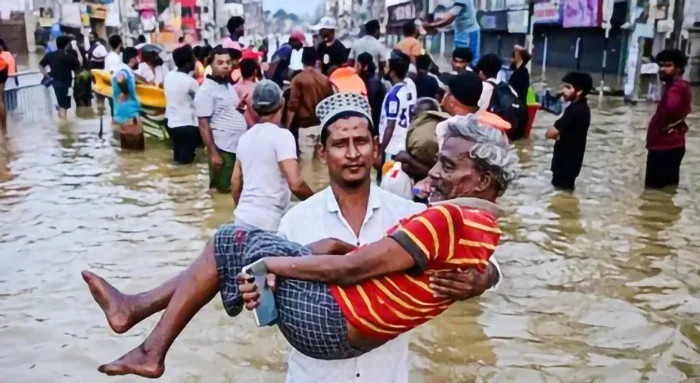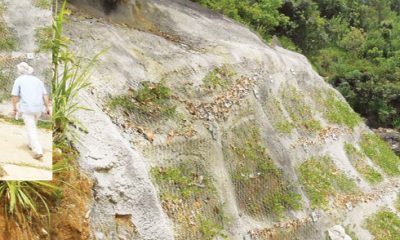Opinion
Sugar scam or tax scam?

Early in the Sirisena administration, there was a ‘treasury Bond scam’ (bandumkara mankollaya) which lawyers, politicians and journalists conjured up into a Central Bank, bond scam (mahabanku badumkara mankollaya). When a fundamental rights case, arising out of the scam, was heard in the Supreme Court, a lawyer for the defence, argued that the matter was a ‘kussiamma job’ in the Central Bank, between the Governor of the Bank and his subordinates, and that the parties in the Central Bank prepared a meal as was ordered by the master. While there was a kernel of truth, in his argument, it was misleading in that officers of the Central Bank were an essential link in the insider dealing, that turned out to be the essential nature of the crime. No assets of the central bank were involved in the transactions and the Bank’s books contain no accounts of any losses arising out of the scam. All the estimated losses were suffered by the state. The dealings were in government bonds. The entire scandal arose in the bond market and revolved around transferring (selling) insider information that enabled a particular dealer in the market to make a killing, at cost to the state, and, incidentally, to other bond dealers. Some senior Central Bank officials, and the Chairman of the Monetary Board (therefore governor of the Central Bank), are among those that have been charged according to law. These allegations arose out of other proceedings after the Supreme Court denied the claims of the complainants that the scandal deserved further inquiry. The moniker ‘mahabanku mankollaya’ helped to perpetuate the myth that Central Bank bonds were involved and that losses were incurred by the Monetary Authority of the country. It diverted attention from the true nature of the crime to a fake nature and thus from those who perpetrated the crime and those who aided and abetted the commitment of the crime to that did not exist.
A commentator, in this newspaper, wrote a few times about the abuse of terms and this newspaper seems to have realized the validity of that man’s claim. Others continue to perpetuate the abuse of terms to propagate fake news. I was annoyed by the cartoon this (15/3) morning in which your cartoonist mentioned a sugar scam. There was none such.
The same fate seems to befall the tax scam (badu mankollaya) arising from the import of sugar and import tax variations for a very brief period of a few months. The tax rate was reduced from Rs. 50 a kilo to Rs.0.25 for a few months and raised again to Rs.50 per kilo, for no substantial reason, other than that of reducing the cost to the consumer (good enough). Large quantities of sugar that were imported at the lower rate of duty, by a few and a very large part of that by one person. Because a few people controlled supplies of sugar they controlled the price of sugar and consumers did not benefit from the lower price that the government expected. It is disingenuous of the Treasury to argue after the event, that they did not know that the few would not reduce prices as the Treasury expected. The same foul game had been played a few years earlier under the Sirisena administration. Treasury economists surely should have known the structure of that market before they took the decision to reduce the rate of duty by a factor of 200 from Rs.50 per kilo to Rs.0.25 per kilo in one fell swoop. The lower import duty was not passed onto the consumer. The Treasury now estimates that the loss to the state was Rs.15.9 billion, not an inconsiderable pot of money. As every loss to someone in the market is always a gain to another, who was that another? The importers, in this instance. Clearly, the scam related to taxes (badu mankollaya) payable to the state. That there was a sugar scandal (seeni mankollaya) is fake news, designed to erase the responsibility of the Treasury for the scam.
Usvatte-aratchi
Opinion
Ditwah wake-up call demands a national volunteer community service for rebuilding Sri Lanka

The Tsunami of 2004 struck our coasts, but the recent Cyclone Ditwah has delivered an unprecedented blow, devastating and traumatising the entire country. President Anura Kumara Dissanayake rightly called it the “largest and most challenging natural disaster” in Sri Lanka’s history.
The toll is staggering: Over 600 people were confirmed dead, with hundreds still missing. More than 2 million citizens – nearly one in ten people—have been affected. 41,000 to 86,000 houses are damaged or completely destroyed. The damage is widespread, with 22 of the island’s 25 districts declared disaster-affected areas. A provisional economic damage estimate reaching up to USD 7 billion—a figure that instantly consumes about 7% of our national GDP. This was not merely a natural disaster; it was a crisis amplified by systemic failure, culminating in a catastrophe that now demands a radical, long-term policy response.
Unlike the Tsunami, the destruction to our vital inland infrastructure—roads, bridges, railway lines, and power networks—has been colossal, crippling the nation’s ability to recover. Over 25,000 members of the tri-forces have been mobilised, and the nation rightly hails their courageous and relentless efforts in rescue and relief. They should now be graduated from ‘Rana Viruvo’ to RUN VIRUVO considering the efforts they are still putting into the relief operations in this unprecedented calamity. But the scale of the rebuilding effort requires a permanently sustained unified national mechanism, perhaps learning from their rich experiences.
Why did devastation reach this cataclysmic level?
Unlike a sudden earthquake/Tsunami, a cyclone’s path is largely traceable. Yet, the “post-mortem” on Ditwah reveals a horrifying truth: the storm’s devastation was amplified by our own institutional failures.
The India Meteorological Department (IMD) which runs the Regional Specialised Meteorological Centre (RMSC) monitors the oceans in this region and issues alerts for cyclones. It serves all the regional countries — Bangladesh, Maldives, Myanmar, Oman, Pakistan, Sri Lanka and Thailand. The RMSC first predicted the formation of a depression as early as November 13 and issued an alert over the possibility of a cyclone forming on November 20. From November 23 onwards, IMD/RMSC had been routinely sharing frequent weather updates with Sri Lanka.
Robust models from the India Meteorological Department and the RMSC provided ample warnings of the depression and subsequent cyclonic intensification. Some of these predictions by the RMC and even the BBC forecasted rainfall over 300- 400 mm which could go up to even half a meter per day. True to their forecasts, Matale tragically received unprecedented rainfall of around 520 mm, triggering fatal landslides. Ditwah’s impact was worsened by its unusually slow movement over the island which sustained heavy rainfall over several days.
The Governance Gap
The critical breakdown occurred between the scientific prediction and the state’s executive arm. Warnings, if not taken seriously or acted upon, become meaningless data points. The core issue is a fragmented disaster management system that lacks the “unified command structure” required for real-time data sharing and rapid deployment. As one analyst noted, the disaster delivered a hard lesson: we entered one of our worst natural disasters in decades without a functioning national strategy and with a severe deficit in “adaptive capacity.
Scientific forecasts were not translated into an appropriate, urgent disaster preparedness program by the Sri Lankan state apparatus. Public reports indicate that national preparedness was woefully short of what was needed. The warnings failed to translate into a coherent, proactive response into an appropriate disaster preparedness action program on the island. This failure points directly to long-standing institutional deficits.
The Strategic Imperative: Dedicated Workforce for a $7B Recovery
President Anura Kumara Dissanayake rightly emphasised that restoring public life requires a unified operational mechanism that goes beyond normal state administration. To tackle this immense task, the Government has established a ‘Rebuilding Sri Lanka Fund’ to finance the medium- and long-term recovery, including essential infrastructure and public health issues.
This newly established ‘Rebuilding Sri Lanka Fund’ addresses the financial cost, but it does not solve the fundamental manpower crisis which is a key bottleneck in retarding the progress of this formidable undertaking. Rebuilding 247 kilometers of impacted roads, restoring two-thirds of unusable railway lines, clearing hundreds of landslides, and repairing crucial irrigation systems demands a sustained, disciplined, and massive workforce that normal state administration simply cannot provide. Furthermore, with the changing climate, events of this nature and magnitude may be more frequent in the future.
As such, there is a moral call to a strategic imperative. The immediate, ad-hoc spontaneous public volunteerism is commendable, but the scale of the task ahead requires a permanent, non-partisan national investment in human resources. The time for piecemeal recovery programs is over. Ditwah has forced the issue of structural accountability and national capacity onto the policy agenda.
A Call for Mandatory National Service
One of the most responsible paths forward is to utilise this crisis to institutionalise a robust National Service System, transforming a generation of youth into a standing army for climate resilience and nation-building. To fail to do so would be to guarantee that the next storm will bring an even higher price.
Sri Lanka cannot afford to be unprepared again. The solution is to immediately mobilise and, for the long term, institutionalise the patriotic energy of our youth into a robust, structured National Service System. This service should be more than just disaster relief; it is a long-term investment that will:
i) Build the Nation: Provide a rapid-response labour force for future disasters, infrastructure projects, and conservation efforts.
ii) Forge Character: Instill essential skills like discipline, leadership, accountability, and responsibility in our youth, thereby contributing to lower rates of substance abuse and crime.
iii) Strengthen Unity: Promote social cohesion and reinforce national identity by having youth from all backgrounds work together for a common cause.
The legal framework for such a move already exists. The Mobilisation and Supplementary Forces Act, No. 40 of 1985, already gives the government the powers to issue a National Service Order to enlist people in a National Armed Reserve. This mechanism can be adapted to establish a non-military, civilian-focused service.
Sri Lanka already has a government supported National Volunteer Service affiliated to her Social Services Department. It coordinates volunteers, develops management systems, and works with partners like the UN volunteers. This service can be improved and upgraded to tackle challenges in natural and/or human induced disasters which are going to be more frequent with greater intensity, at times.
In the immediate term, the large number of existing volunteers dispersed all over the island need to be engaged as understudy groups, working directly alongside the armed forces and government departments in the recovery process which is already happening in a number of instances.
Ditwah is our wake-up call for longer-term strategic planning and policy reforms. Alongside reacting to catastrophes in a piecemeal manner in the short-term, we must systematically start building a resilient nation with a vision for the future. Investing in a structured, mandatory Civilian National Service is the only way to safeguard our future against the inevitable challenges of climate change and to truly rebuild Sri Lanka.
Globally over 60 countries have national service portfolios mostly of military nature. Both Germany and France have recently reintroduced their national services to meet their own specific needs. In the US, the National Community Service centers around the Corporation for National and Community Service (CNCS), a federal agency that runs programs like AmeriCorps and Senior Corps, mobilising millions of Americans in service to address needs in education, disaster relief, environment, and more, fostering civic duty and offering educational awards for service.
Incorporate National Service into Educational Reforms
We must mobilize our youthful energy into a national service portfolio unique to our own needs giving due recognition to our history, geography and culture. As a long-term investment, this should be initiated while children are still in school, preparing them mentally and physically to contribute to nation-building.
A well-designed National Volunteer Community Service would instill discipline and foster essential skills like leadership, responsibility, and mutual respect, while contributing at the same time to national development. We can tailor this service to tackle our unique challenges in public safety, disaster relief, and environment conservation.
Existing school programmes like scouting and cadeting can be innovatively transformed to lay a sound foundation for this life-changing National Service for all schoolchildren. According to the initial estimates of UNICEF, over 275,000 children are among the 1.4 million people affected both physically and mentally who need careful rehabilitation.
The current educational reforms are an ideal platform to impart crucial values in patriotism and introduce essential skills like time management, discipline, and accountability. This system could not only build successful individuals but also help decrease social issues like substance abuse and crime among youth.
In the immediate future, to meet the demands of the recovery effort now, currently available volunteers should be engaged as understudy groups, working alongside the armed forces and government departments involved in the rebuilding process. The long-term investment in a Mandatory National Service, on the other hand, will strengthen our national identity and contribute to the “unified operational mechanism” the President has called for.
The author can be contacted at nimsavg@gmail.com
by Emeritus Professor
Nimal Gunatilleke
Opinion
A national post-cyclone reflection period?

A call to transform schools from shelters of safety into sanctuaries of solidarity
Sri Lanka has faced one of the most devastating natural disasters in its post-independence history. Cyclone Ditwah, with its torrential rains, landslides, flash floods, and widespread displacement, has left an imprint on the nation that will be remembered for decades. While rescue teams continue to work tirelessly and communities rush to rebuild shattered homes and infrastructure, the nation’s disaster assessment is evolving by the day. Funds from government channels, private donations, and the Sri Lankan diaspora are being mobilised and monitored with care. Humanitarian assistance—from the tri-forces and police to religious institutions and village communities—has surged with extraordinary compassion, but as in every disaster, the challenge ahead is not only about restoring physical structures; it is also about restoring the social and emotional fabric of our people for a sustainable future.
Schools on the Frontline of Recovery
The Ministry of Education is now faced with a difficult but essential question: When and how should schools reopen? The complexity of the problem is daunting. Hundreds of schools are either partially submerged, structurally damaged, or being used as temporary shelters, bridges and access roads have collapsed, and teachers and students in highly affected districts have lost family members, homes, and belongings. And yet, not all regions have suffered to the same degree. Some schools remain fully functional, while others will require weeks of rehabilitation.
The country has navigated a similar challenge before. In 2005, following the tsunami that hit mainly the coastal areas of the island, the education system faced a monumental recovery phase, requiring temporary learning spaces, psychosocial support units, and curriculum adjustments. During the COVID-19 pandemic, schools reopened in staggered phases with special protocols. International schools and private educational institutions, with greater autonomy, are likely to restart their academic calendar earlier. Regardless of whether a school belongs to the national, provincial, Pirivena, or international sector, however, education must restart sooner rather than later. The reopening of schools is not merely an administrative decision; it is a symbolic and structural step toward national healing and a restorative future for the country.
Disasters Do Not Discriminate — Neither Should Education
Just like the tsunami of 2004, the major floods of 2016, the landslides of Aranayake (2016), Meeriyabedda (2014), and Badulla (2022), and the Covid-19 pandemic (2021), the cyclone Ditwah has once again exposed the fragile but deeply profound truth that natural phenomena do not recognize distinctions created by humans. Floodwaters do not differentiate between provinces, school systems, or social classes; landslides do not check national exam results before destroying a home; and suffering does not pause to ask whether a child is from a rural Mahaweli village or an elite urban suburb.
In this context, educational institutions have a responsibility that goes far beyond exams and syllabi. This aligns profoundly with an often-cited principle of Jesuit education articulated in 2000 by Fr. Peter-Hans Kolvenbach, S.J., the former Superior General of the Society of Jesus:
Tomorrow’s whole person cannot be whole without an educated awareness of society and culture, with which to contribute socially, generously, in the real world. Tomorrow’s “whole person” must have, in brief, a well-educated solidarity… learned through “contact” rather than “concepts.” When the heart is touched by direct experience, the mind may be challenged to change. Personal involvement with innocent suffering, with the injustice others suffer, is the catalyst for solidarity which then gives rise to intellectual inquiry and moral reflection.”
In this sense, schools must guide children to process what they have witnessed—directly or indirectly—and transform these experiences into moral resilience, empathy, environmental consciousness, and collective responsibility. In doing so, one should bear in mind that every child in Sri Lanka has experienced Cyclone Ditwah in some way:
Children Who Faced the Disaster Directly:
Some children lived through the cyclone in the most harrowing ways—watching floodwaters creep into their homes, escaping rising torrents, or fleeing as landslides tore through familiar ground. Their memories are filled with the sound of rushing water, collapsing earth, and the frantic efforts of parents and neighbours, losing their family members, and trying to keep everyone safe.
Children Who Supported Frontline Families:
Others experienced the crisis through the lens of responsibility. They watched fathers, mothers, siblings, or relatives join rescue teams, distribute supplies, or help evacuate neighbours. These children carried a different kind of fear—waiting in silence, praying that their loved ones would return safely from dangerous missions.
Children Who Witnessed the Disaster Through Media:
Many encountered the cyclone from within their homes or shelters, glued to phones, televisions, and social media feeds. They saw images of villages underwater, families stranded on rooftops, frantic cries for help, boats battling fierce currents, and choppers airlifting stranded people. Even from a distance, these scenes left deep emotional imprints.
Children Who Internalised the Atmosphere of Fear:
Some were not exposed directly to images or destruction, but absorbed the tension in their households—whispered conversations, worried faces, disrupted routines, and sleepless nights. Their experience was shaped by the emotional climate around them: the uncertainty, the stress, and the unspoken fear shared by the adults they depend on.
Children Who Got Involved in Relief Efforts:
Across Sri Lanka, countless children became active participants in relief efforts—some spontaneously, others through families, schools, churches, temples, mosques, and youth groups. Individually, they helped neighbors carry belongings, comfort younger children who were frightened, fetch water and dry rations, and assist the elderly in evacuation centers. Within families, many helped prepare meals for displaced people, sorted clothing donations, packed dry-food parcels, and joined parents in visiting affected households. Through organizations, such as temples, churches, mosques, charity foundations, school associations, clubs, scout groups, Girl Guides, Sunday school units, youth groups, and student unions, children coordinated collection drives, raised funds, gathered books and uniforms for those who are affected, and volunteered at distribution points. These acts, small and large, are beacons of the nation’s hope, revealing that even a crisis as destructive as Cyclone Ditwah, Sri Lankan children were not only making meaning of suffering, but also cultivating compassion, solidarity, and shared responsibility.
In one way or another, Sri Lanka’s children have been touched by the experience. Their hearts are stirred. Their minds are open. While not all trauma comes from direct contact, indirect exposure can be equally jarring, especially for younger children; their psychological, emotional, and social well-being must be handled with sensitivity and foresight. This moment, therefore, is an educational opportunity of rare depth—if we have the courage and creativity to embrace it.
A National Post-Cyclone Reflection Period (NPCRP)?
Once schools reopen, no child should simply return to the classroom as if nothing happened. A top-down insistence on “catching up” academically without addressing emotional wounds will only store up psychological problems for the future. Instead, schools should designate an initial period for reflection, storytelling, sharing, healing, and meaning-making. Hence, a mandatory National Post-Cyclone Reflection Period (NPCRP) is not merely a “feel-good” recommendation. It draws from post-tsunami educational reforms both in Sri Lanka (2004) and in Japan (2011), WHO frameworks for psychosocial healing in schools, UNICEF guidelines on post-disaster learning environments, and our own cultural traditions of collective mourning and remembrance in Sri Lanka. In Sri Lanka, villages often come together after a death for almsgivings, month-mind ceremonies, etc. Our religions—Buddhism, Christianity, Islam, and Hinduism—each emphasize compassion, reflective mourning, and community healing. Why should schools not embody these cultural strengths after a catastrophe that has impacted an entire nation?
(To be concluded)
(Dr. Rashmi M. Fernando, S.J., is a Jesuit priest, educator, and special assistant to the provost at Loyola Marymount University, Los Angeles, California, USA.).
by Dr. Rashmi M. Fernando, S.J.
Opinion
Venerable Mettavihari Denmarke passes away

Danish Monk Who Revolutionised Digital Buddhism and World’s Buddhist Media
The Buddhist community in Sri Lanka and around the world is mourning the passing of Venerable Mettavihari Denmarke, the Danish-born monk whose pioneering work transformed the modern dissemination of Theravada Buddhism. He passed away peacefully in Denmark recently, after battling with cancer.
Born Jacub Jacobson, a Christian and a successful businessman in Denmark for more than 18 years, he was drawn to the timeless truth of the Four Noble Truths and the serenity of the Noble Eightfold Path. This spiritual awakening led him to the Buddhist Order, where he was ordained under Ven. Agga Maha Panditha Madihe Pannaseeha Maha Nayake Thera, receiving the name Bhikkhu Mettavihari.
A Life Rooted in Sri Lanka
Venerable Mettavihari first arrived in Sri Lanka in 1969 and immediately felt a deep connection to the island and its people. Inspired by the purity of the Dhamma, he made Sri Lanka his permanent home. In 1988, both he and his wife entered the Buddhist Order – he as a monk and she as a nun dedicating themselves wholeheartedly to the Sasana.
Remembered for Compassion and Humility
I was fortunate to associate with him for over 10 years on several projects. His kindness towards all living beings and his sincere practice of the Dhamma were exemplary even for monks.
I recall one occasion when he attended a full-day workshop on neuroscience and Buddhism simply to encourage me. He stayed throughout, offering blessings and support. That day the devotees responsible for bringing Dana were late, yet he asked only for a piece of bread, as he was committed to maintaining the Vinaya discipline of eating before noon.
He was often seen walking barefoot on alms rounds gentle, humble, and entirely detached from worldly comforts.
His studio was always open to me, welcoming any noble work and encouraging efforts to help people lead meaningful, wholesome lives.
He was a strict Vinaya practitioner, a monk of exceptional discipline, simplicity, integrity, compassion, loving-kindness, and empathy that were beyond imagination.
A Pioneer of Digital Buddhism
Before his ordination, Venerable Mettavihari worked in the IT field in Denmark. He used this expertise to usher Buddhism into the digital age.
Through metta.lk, he created one of the world’s earliest online Buddhist databases, digitising the Tripitaka and making it available in three languages. He also provided email services to temples and ensured that Dhammapada verses accompanied each message quietly spreading the Dhamma across the globe.
Founder of Dharmavahini – Sri Lanka’s First Buddhist TV Channel
He founded Dharmavahini, Sri Lanka’s first Buddhist television channel, run by a small team of volunteers with minimal resources. More than a broadcaster, Dharmavahini was his effort to restore forgotten values in Sri Lankan society.
Today, it remains a landmark contribution to Buddhist media.
Educational Reformer – Founder of Learn TV
After witnessing the educational challenges faced by rural children following the 2004 tsunami, Venerable Mettavihari launched Learn TV, a 24-hour educational channel developed with the Ministry of Education.
This enabled thousands of students, especially those without tuition or teachers, to receive continuous, curriculum-based lessons from home.
A Monk Who Became Sri Lankan at Heart
Fluent in Sinhala and immersed in Sri Lankan culture, he often referred to himself simply as “a Sri Lankan.” During a conversation with friends, he humorously admitted that speaking Danish had become difficult, “because I am now a Sri Lankan.”
Noble Life and a Lasting Legacy
Most Venerable Mettavihari (aged 80)
With boundless compassion and humility, he uplifted countless lives through education, media, technology, and the Dhamma.
His legacy includes:
- Digitising the Tripitaka and pioneering online Buddhist resources
- Establishing Dharmavahini, Sri Lanka’s first Buddhist TV channel
- Launching Learn TV to uplift rural education
- Advancing global Buddhist communication through IT
- Strengthening moral values in Sri Lankan society
He was also an ardent supporter of the Light of Asia Foundation since its inception. He supported and guided the production of the Siddhartha movie, the establishment of the Sakya Kingdom, the International Film Festival, and, just a few months ago, he participated in the first production of a short video series on the Sutta which is currently under production and expected to be launched soon.
His life stands as a rare example of innovation, devotion, and deep spiritual conviction.
Venerable Mettavihari passed away mindfully at his home in Denmark.
His passing is a profound loss not only for Sri Lanka, but for the world.
May this noble monk attain the supreme bliss of Nibbana
Lalith de Silva
Former President, Vidyalankara Maha Pirivena Trustee, Light of Asia Foundation
-

 News4 days ago
News4 days agoOver 35,000 drug offenders nabbed in 36 days
-

 Features2 days ago
Features2 days agoFinally, Mahinda Yapa sets the record straight
-

 Business6 days ago
Business6 days agoLOLC Finance Factoring powers business growth
-

 News3 days ago
News3 days agoCyclone Ditwah leaves Sri Lanka’s biodiversity in ruins: Top scientist warns of unseen ecological disaster
-

 News6 days ago
News6 days agoCPC delegation meets JVP for talks on disaster response
-

 News6 days ago
News6 days agoA 6th Year Accolade: The Eternal Opulence of My Fair Lady
-

 News4 days ago
News4 days agoRising water level in Malwathu Oya triggers alert in Thanthirimale
-

 Features5 days ago
Features5 days agoThe Catastrophic Impact of Tropical Cyclone Ditwah on Sri Lanka:










